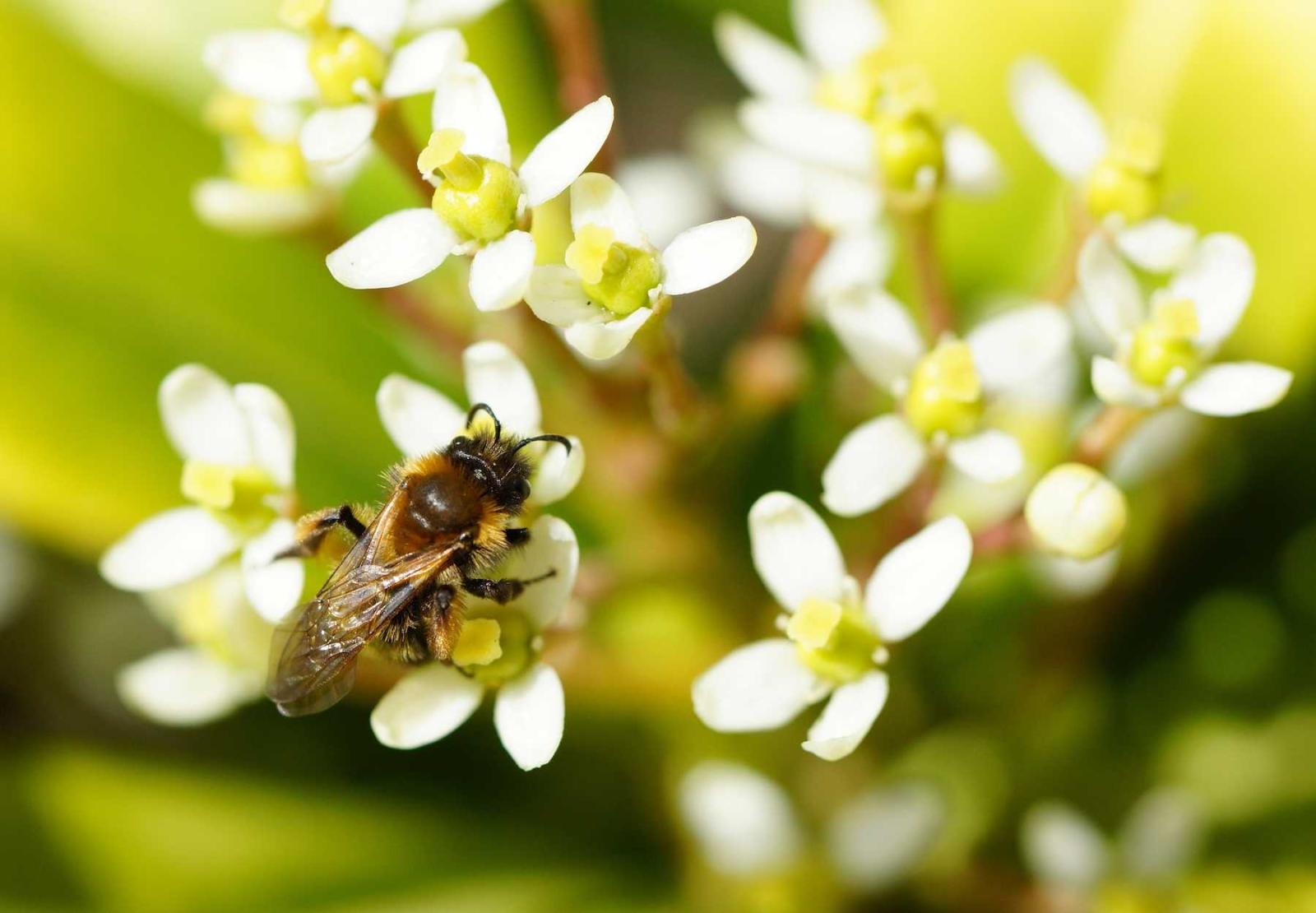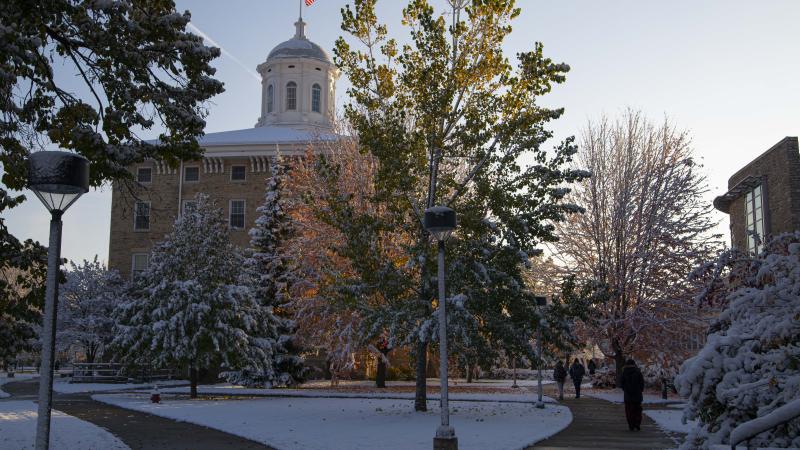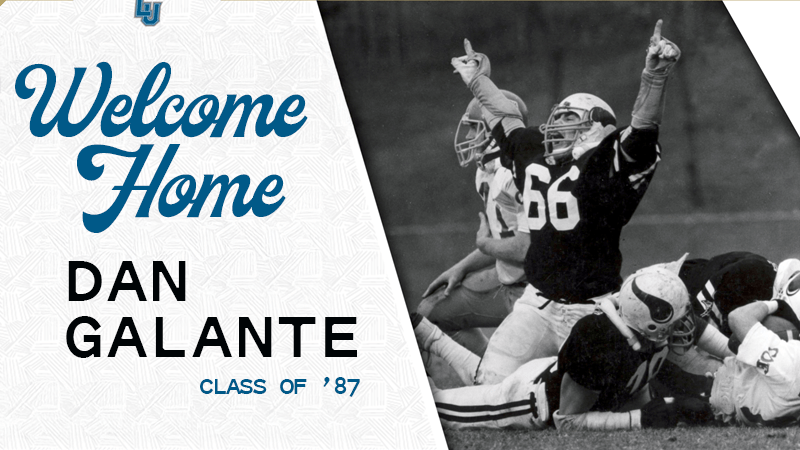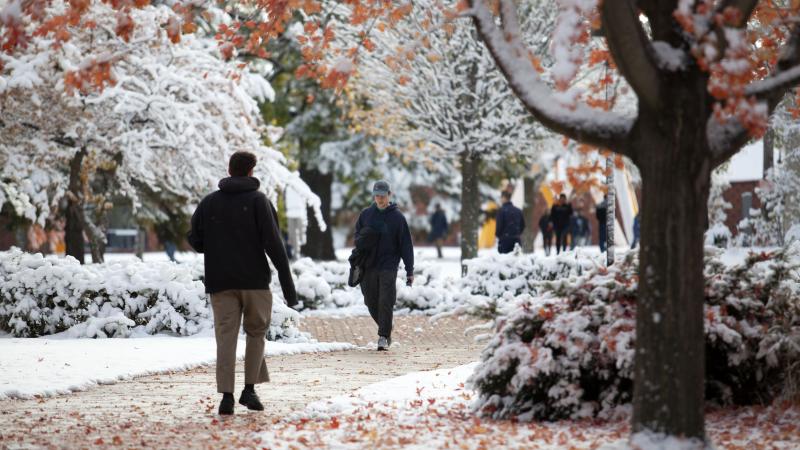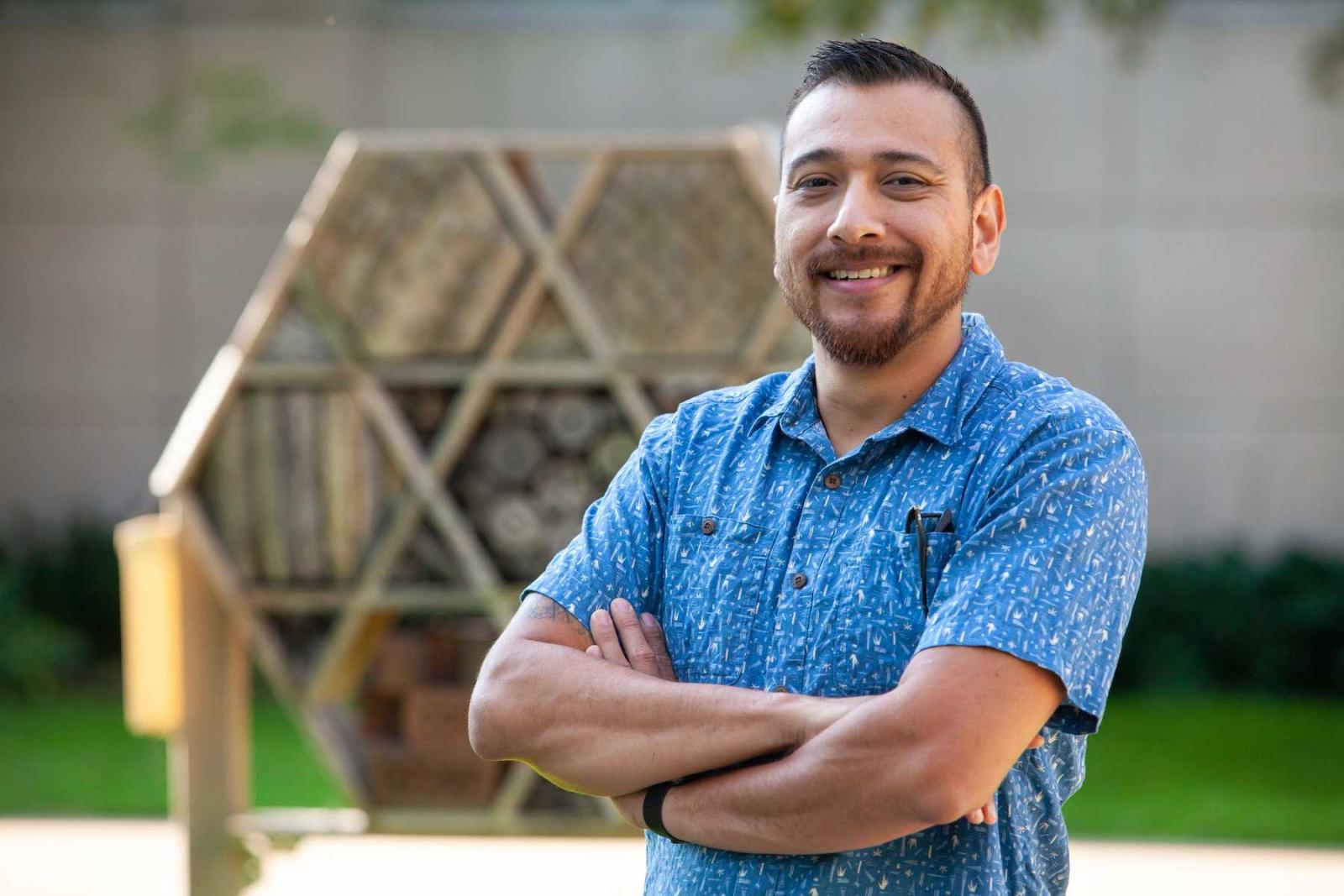
Israel Del Toro stands in front of one of the bee houses on the Lawrence campus. (Photo by Danny Damiani)
As the days slide by in May and the grass grows above his shoe tops, Israel Del Toro is all smiles.
In between fielding calls from the New York Times, National Public Radio, PBS Wisconsin, The Post-Crescent, and countless other media outlets across the country, the assistant professor of biology at Lawrence University finds himself thinking back to that day nearly four years ago when he first approached a member of Appleton’s Common Council with a wild idea—what if we make Appleton ground zero for a No Mow May experiment?
The idea, based on a bee conservation initiative first tried in England, called for Appleton homeowners to voluntarily leave their lawnmowers in the garage through the month of May, allowing the grass and weeds of spring to grow long, becoming a haven for bees and other pollinators.
The initial reaction from the alderperson?
“He thought it was crazy,” Del Toro said. “He thought it would drive people insane, and he wasn’t wrong.”
But the alderperson initially bought in, and Del Toro’s efforts to push the idea through city hall began.
“There was a lot of initial hesitance,” Del Toro said, “a lot of push back, people saying, ‘You know, this doesn’t seem like something we want to do. It’s going to make the city look trashy, it’s going to fill our city with pests and rodents and all sorts of vermin.’ We said, ‘Well, there’s only one way to find out; let’s just do the experiment.’”
“The no-mow component is great. But we’re also trying to use this platform to educate people about other pollinator-friendly practices.”
Israel Del Toro, assistant professor of biology
The council agreed—eventually—and No Mow May was launched in Appleton in May 2020, with about 450 brave homeowners signing up.
Del Toro, along with Assistant Professor of Geosciences Relena Ribbons and a half dozen Lawrence students working in his lab, studied it along the way, gathering and processing data on bee and other pollinator activity in those yards.
“We found there were no apocalyptic consequences,” Del Toro said. “The city did not implode; we were not overrun with rats and vermin. Then it was, OK, cool, we now had a measurable effect on pollinators. Let’s keep going with it.”
By the second year, 2,500 homeowners in 10 Wisconsin communities signed up, and Del Toro’s data was producing tangible results.
“What we’re finding is that No Mow May lawns compared to mowed lawns actually not only increased pollinator abundance but increased overall insect abundance as much as ten-fold,” Del Toro said. “What we’re seeing there is that the base—the food web base—is growing. Yes, it might be a little scary to say all these insects are coming back, but that’s actually a really good thing. Insects form the base for feeding birds, for example. Or doing other pollinating tasks. It’s not just bees that pollinate, but also flies, beetles, wasps. Those guys also are pollinators and they’re coming back with No Mow May.”
That’s a message that’s resonating. Appleton now has upwards of 900 homeowners signed up in year 3, and the number nationwide is nearing 5,000 as interest spreads. Del Toro believes more than 35 communities across the country—mostly in the Midwest—have now waived ordinances for May that require homeowners to keep their lawns under 8 inches in length.
That has made Del Toro, Ribbons, and the students in Lawrence’s pollinator lab very busy this spring. Del Toro has fielded media calls from all over the country, with No Mow May being prominently featured on NPR, in the New York Times, Star Tribune in Minneapolis, Sierra magazine, and on the blog authored by longtime television news icon Dan Rather, among others.
Pollinator research is but one research opportunity in Lawrence's Biology Department.
“It’s exciting but it’s also nerve-wracking, trying to make sure everybody is following the same protocols,” Del Toro said. “The no-mow component is great. But we’re also trying to use this platform to educate people about other pollinator-friendly practices.”
Appleton Mayor Jake Woodford ’13, an assistant to the president at Lawrence before being elected mayor in 2020, told NPR the city has taken pride in being at the center of the pollinator-friendly movement. The Common Council recently took the No Mow May initiative—suspending enforcement of the 8-inch-height ordinance during May—from a trial basis in 2020 and 2021 to a permanent fixture going forward.
“It has not been without its hiccups or its frustrations from some community members,” Woodford told NPR. “But by and large, there’s just been incredible support for the effort, a lot of buy-in, a lot of participation.”
On the Lawrence campus, grass is being allowed to grow long during May in areas in which events are not being held. That includes the Memorial Hall hill just north of the SLUG garden, the wooded area near Alexander Gym and the grassy area near the track. Elsewhere on campus there are multiple bee houses in place, and there’s an active apiary managed by Del Toro and his students. Lawrence is recognized as a bee-friendly campus by Bee City USA, an initiative of Xerces Society.
A learning opportunity
The research taking place is giving Lawrence students real-time opportunities to study pollinator activity and crunch data.
“We really went into this with no expectations,” said Del Toro, a member of the biology faculty since 2016. “We just let the data speak for itself. And that was my goal as a data scientist. Run an experiment and let the data tell the story. And so far, the story is pretty positive for pollinators and pollinator conservation.”
The students in the lab—three seniors and four first-years or sophomores—are doing outreach with participating homeowners and collecting data. Some are also using No Mow May to do individual research projects.
“It provides a very practical hands-on activity for students to actually go out there and measure ecological diversity and get involved in active research,” Del Toro said. “It’s very real data, a real ecological experiment that has become available to students.”
That data has shown, among other things, that No Mow May lawns had five times the number of bees and three times the bee species than neighboring lawns that were mowed during May. It's a lifeline for pollinators.
Dylan McMurray, a senior neuroscience major from Chicago, has been part of Del Toro’s lab for two years. The data collection, he said, has been fascinating.
“The ugly truth we need to come to is, bees are dying in our world and we need to do more to save them,” he said.
McMurray was able to incorporate the No Mow May research into his senior capstone and honors thesis.
“Even as a neuroscience major, I was able to take this massive project and make it something of my own,” he said.
“Majoring in biology has always been a goal of mine, but little did I know it would help me find my passion in botany and entomology."
Bella Goland, a sophomore doing research as part of Lawrence's pollinator lab
Bella Goland, a sophomore biology student from Winneconne, is among the group of younger Lawrence students stepping up to move the bee research forward. She’ll work this summer as the apiary director, leading efforts to keep a handful of hives on and off campus thriving.
“Yes, this means I get to put on a bee suit and do all the heavy lifting and keep track of the hives’ health,” she said.
She’ll also be working on a physiology project in the lab, doing thermotolerance testing on honeybees, and collecting data from citizen participants in No Mow May.
“Majoring in biology has always been a goal of mine,” Goland said, “but little did I know it would help me find my passion in botany and entomology. This work is something I am very excited to be doing and something I see myself expanding on in the future. The importance of bees as part of our ecosystem is crucial to human existence; if the bees go extinct, so do we.”
Growth in bee research
The bee research being led by Del Toro has expanded into other areas, some of it tied to climate change. In the fall of 2021, he received a six-figure national grant to supersize research in his lab, investigating the varied reasons that bees are good pollinators. He and his team are collaborating with colleagues at the University of Wisconsin-Madison, using microtomography (microCT) technology to take a closer look at the inner workings of bees.
It all rolls into research that supports Del Toro’s ongoing advocacy of pollinator health. That includes No Mow May, which is having a moment in the sun this spring.
“Appleton’s No Mow May initiative had a clear purpose: to save the bees—and not just honeybees (which are European imports), but also native bees, such as bumble bees, mining bees and sweat bees,” The New York Times wrote. “Bees are facing catastrophic declines. In North America, nearly one in four native bee species is imperiled, according to the Center for Biological Diversity, partly because of habitat loss, pesticide use, climate change and urbanization.”
Del Toro spent so much time advocating for No Mow May in Appleton’s city hall the past few years, he began thinking of other ways he could be involved in the community. That led him to run for an open seat on the Common Council earlier this year. He was elected to the District 4 seat in April, his first foray into public office.
That, too, makes him smile as he thinks back to that initial conversation when he first pitched No Mow May. “I figured I’m already doing this work, I may as well jump in with both feet,” he said.
